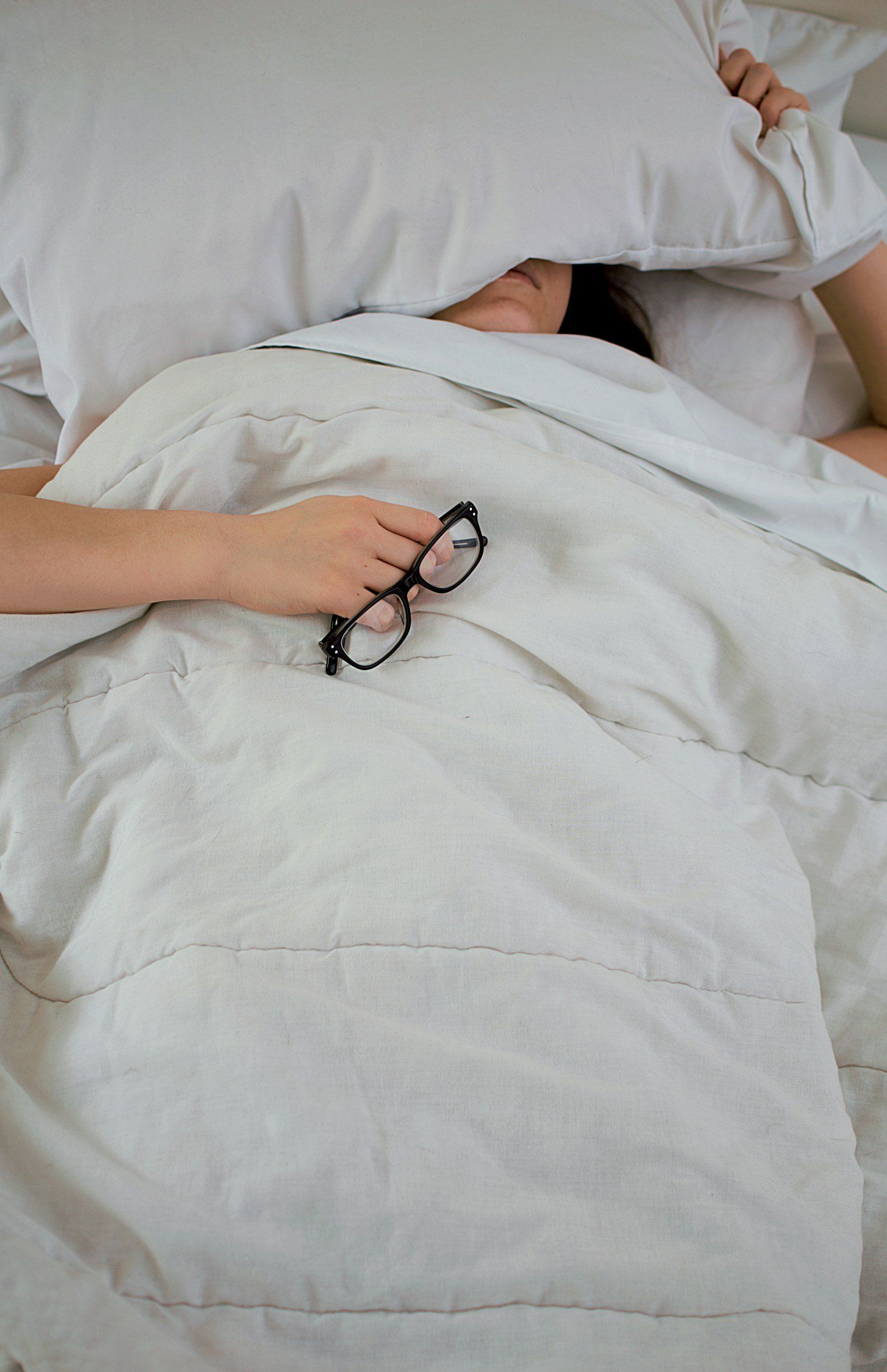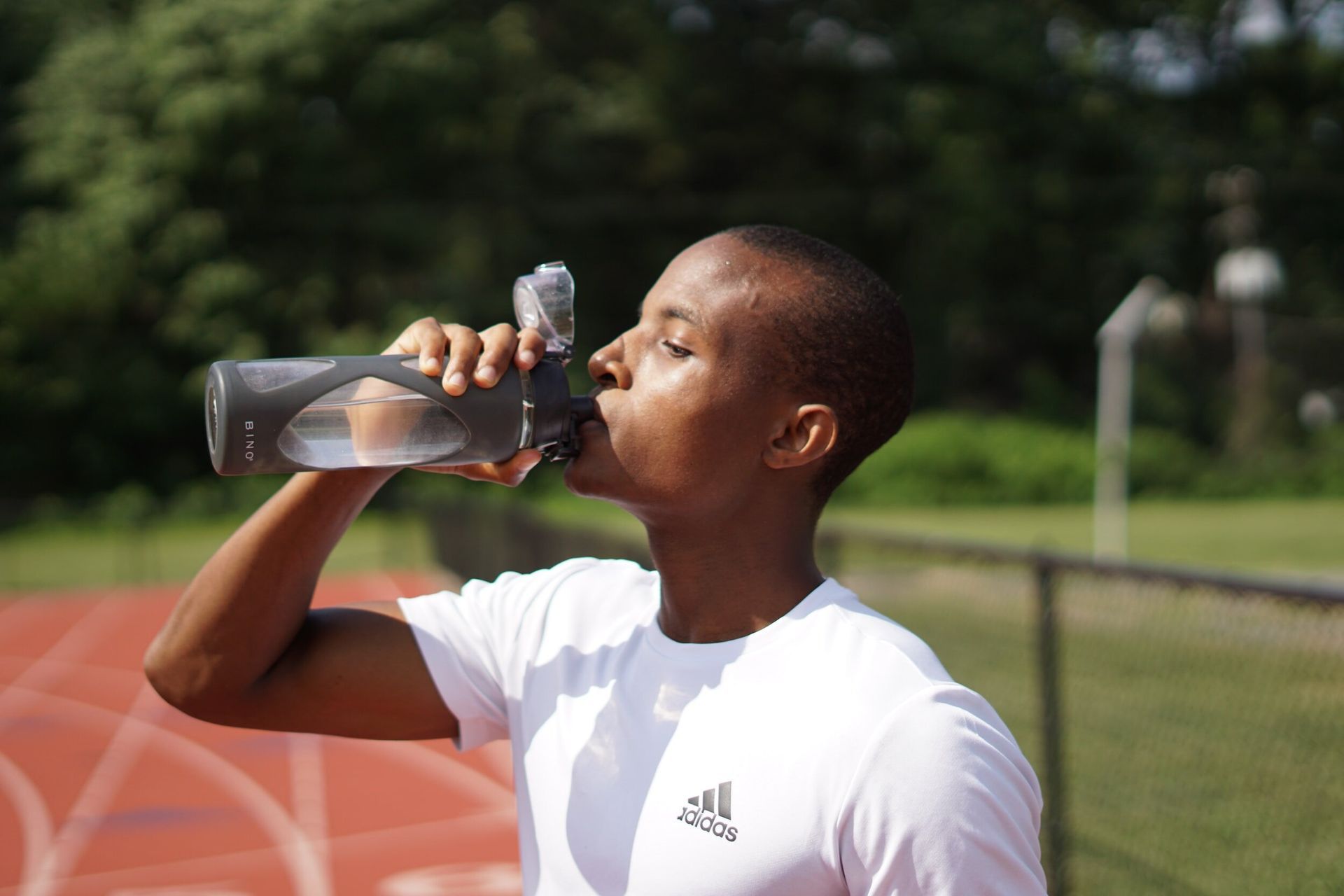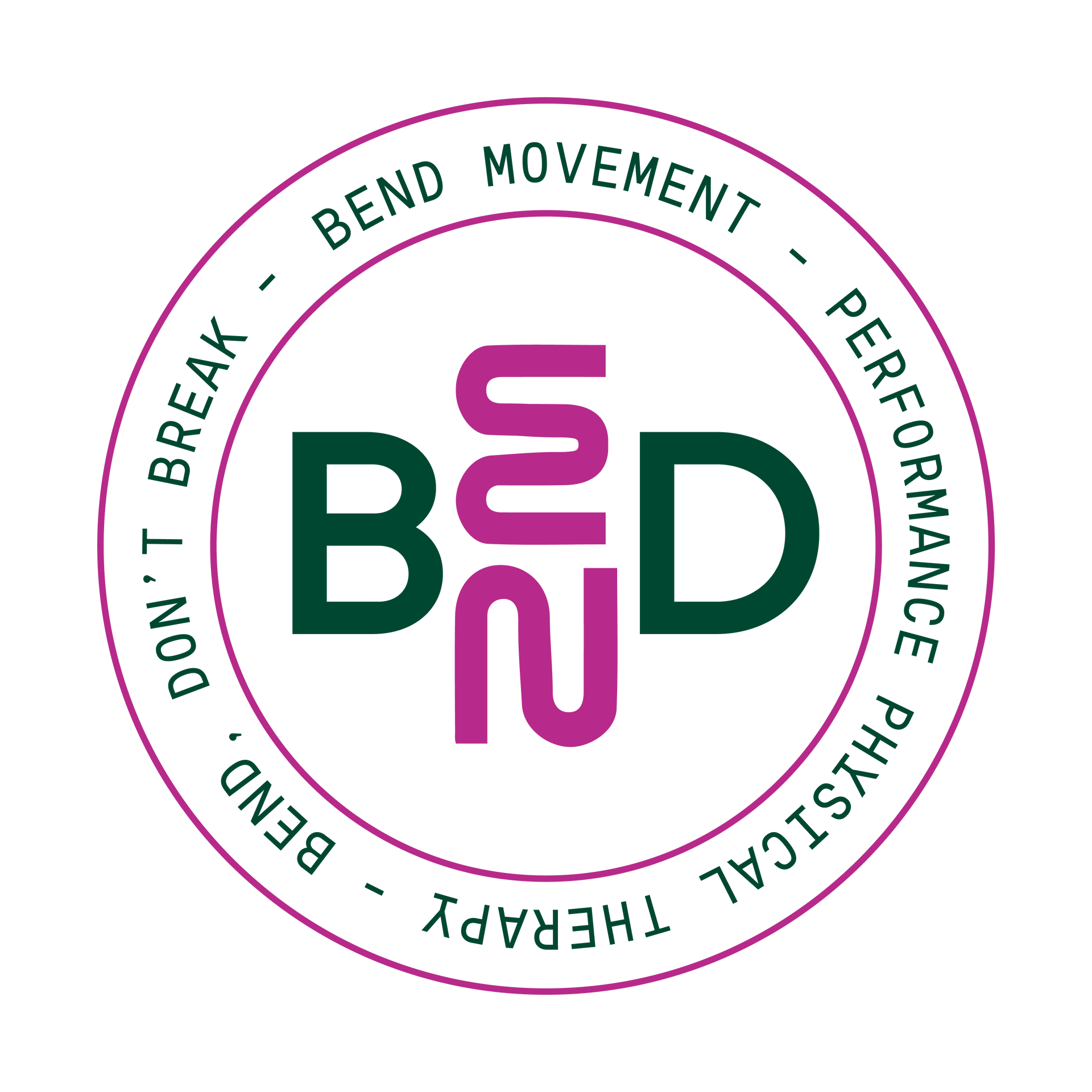Foundations of Physical Health and Wellness
Catogories

Transforming Lives: How Bend Movement Combines Physical Therapy and Functional Fitness in Richmond Physical therapy and functional fitness serve as the building blocks for a healthy, active lifestyle. When combined, they provide a comprehensive approach to healing, strength-building, and long-term wellness. For individuals in Richmond, VA, Bend Movement Physical Therapy takes these concepts to the next level, integrating cutting-edge therapeutic techniques with practical fitness solutions. This innovative approach is designed to not only alleviate pain and restore mobility but also to empower individuals to move confidently and live actively. Physical therapy traditionally focuses on addressing pain, injuries, and mobility restrictions, using evidence-based treatments to help patients recover from physical setbacks. Functional fitness, on the other hand, emphasizes training movements that replicate real-world activities, such as lifting, reaching, or climbing stairs. Together, these approaches form a powerful synergy, enhancing both recovery and overall physical performance. Bend Movement bridges these fields seamlessly, offering a unique experience for residents of Richmond who are ready to reclaim their health and vitality. From our blog: The Importance of a Specific Warm-Up Outside Activity with Shorter Days Mobility and Strength on the Go: Traveling with Minimal Equipment Pain Isn’t Always Where the Problem Lies Embracing Discomfort in the Rehab Process Why Functional Fitness Enhances Physical Therapy Functional fitness amplifies the benefits of traditional physical therapy by focusing on movements that matter most in daily life. While therapy addresses immediate concerns such as pain relief or post-injury recovery, functional fitness ensures that the body can adapt to everyday challenges. This holistic approach equips patients to not only heal but thrive in their environments. Take, for instance, someone recovering from a knee injury. Traditional therapy might involve exercises to strengthen the muscles around the knee. Bend Movement enhances this by incorporating squats, lunges, or balance drills, preparing the patient for real-world tasks like walking, climbing stairs, or even playing sports. This type of integration ensures that recovery is not just a short-term solution but a pathway to long-term resilience. In addition to aiding recovery, functional fitness prevents future setbacks. Many injuries stem from imbalances or weaknesses in the body that go unnoticed until they cause a problem. Bend Movement addresses these vulnerabilities, creating stronger, more adaptable bodies that are less prone to reinjury. Patients who embrace this approach often report feeling more capable and confident in their movements than ever before. How Bend Movement Physical Therapy Combines These Approaches Bend Movement’s unique methodology begins with a comprehensive evaluation of each patient’s needs. This initial assessment isn’t limited to the site of pain or injury; instead, therapists analyze the patient’s overall movement patterns, strength, flexibility, and lifestyle demands. By understanding the whole picture, the team can design programs that target both immediate concerns and long-term goals. A cornerstone of Bend Movement’s approach is its emphasis on personalized care. Every treatment plan is customized to align with the patient’s unique circumstances. For instance, someone recovering from shoulder pain might begin with gentle manual therapy to restore joint mobility. As they progress, targeted exercises such as resistance band pulls or weight-bearing activities are introduced to build strength and stability. As patients regain mobility, Bend Movement incorporates functional fitness exercises to bridge the gap between therapy and everyday life. These activities mimic real-world movements, ensuring that patients are not only pain-free but also equipped to handle daily challenges. For example, a program may include rotational core exercises to improve the ability to twist and turn during routine tasks, or balance drills to help reduce the risk of falls. Another key component of Bend Movement’s care is education. Patients aren’t just passive participants in their recovery; they are empowered with knowledge and tools to maintain their progress. Therapists guide them on proper movement mechanics, posture correction, and self-care strategies that can be applied outside the clinic. This proactive approach helps patients feel confident in their ability to sustain their results long after therapy ends. The Impact on Recovery and Long-Term Health The results of combining physical therapy and functional fitness are transformative. Patients experience faster recovery times, as their bodies become stronger and more adaptable. Injuries that once seemed like insurmountable obstacles are overcome with a blend of targeted therapy and practical training. Patients recovering from surgeries often report that Bend Movement’s integration of fitness into therapy accelerates their return to normal activities. Those managing chronic conditions find relief through mobility exercises that keep their joints healthy and pain at bay. Athletes, in particular, benefit from performance-enhancing programs that not only heal injuries but also improve their strength, endurance, and agility for future competitions. The advantages don’t stop at recovery. Functional fitness lays the foundation for long-term health by building strength, stability, and mobility in a sustainable way. Patients who complete their programs at Bend Movement often express newfound confidence in their abilities, whether it’s carrying groceries, running a marathon, or simply enjoying a pain-free life. Why Richmond Residents Trust Bend Movement Physical Therapy Bend Movement has become a trusted name in Richmond, VA, by delivering exceptional results through a patient-centered approach. Their reputation stems from their commitment to addressing the root causes of physical challenges, rather than merely treating symptoms. Patients appreciate the personalized attention they receive, knowing that their care plans are tailored to their unique needs and goals. What sets Bend Movement apart is their seamless integration of therapy and fitness. While many clinics treat these as separate disciplines, Bend Movement understands that true recovery requires both. This holistic approach not only heals but also equips patients with the strength and skills to maintain their health for years to come. Located conveniently in Richmond, VA, Bend Movement Physical Therapy serves individuals from all walks of life. Whether recovering from an injury, managing chronic pain, or seeking to enhance physical performance, patients find a welcoming and supportive environment at Bend Movement. Their expert team guides every individual on a path to better health, ensuring they leave stronger, more confident, and ready to embrace an active lifestyle.

The Power of Play Incorporating play into your exercise routine is a potent strategy to enhance movement health, increase variety, and make physical activity enjoyable. Playful movement engages both the body and mind, fostering a positive relationship with exercise that can lead to long-term fitness and wellness benefits. With power of play, you unlock a more dynamic and enjoyable approach to staying active. Enhancing Movement Health Playful activities encourage variable movement patterns, which are essential for overall movement health. Engaging in activities like dancing, playing sports, or participating in obstacle courses requires a range of movements that can improve your coordination, balance, and agility. These varied movements help to develop a well-rounded fitness level and reduce the risk of injury by ensuring that all muscle groups are used and strengthened. The spontaneous and often unpredictable nature of play challenges the body in ways that traditional exercise routines might not, leading to improved adaptability and resilience. Increasing Movement Variety One of the key benefits of incorporating play into your fitness routine is the increase in movement variety. Traditional workouts can sometimes become monotonous, leading to decrease in motivation. However, playful activities are inherently diverse and can be easily adapted to include different types of movement. For example, a game of tag can involve running, dodging, jumping, and quick changes in direction, all within a single session. This variety not only keeps the exercise interesting, but also ensures a comprehensive workout that targets multiple aspects of fitness, from cardiovascular health to muscular strength. Making Exercise Fun Perhaps the most compelling reason to embrace play in your exercise routine is the sheer enjoyment it brings. When exercise feels like play, it becomes less of a chore and more of an exciting activity you look forward to. This positive association can help to build a sustainable exercise habit, as you are more likely to stick with activities that you find fun and rewarding. Incorporating elements of play can be as simple as organizing a group sports game with friends, exploring new outdoor activities, or setting up playful fitness challenges. In conclusion, the power of play in movement health lies in its ability to enhance movement variety, improve overall fitness, and make exercise fun. By integrating playful activities into your routine, you can achieve a more dynamic and enjoyable approach to staying active, ensuring long-term benefits for your physical and mental well-being. Embrace the joy of movement, and let play be a cornerstone of your fitness journey. Come play with us at Bend Movement Physical Therapy, where we show you how to bend, not break!

Stay Cool This Summer: The Science of Efficient Cooling As the summer heats up, understanding how to efficiently cool your body can make a significant difference in both your comfort and performance. One of the most effective methods for rapid cooling involves targeting glabrous skin—areas of the body without hair, such as your palms, the bottom of your feet, and your forehead. These regions are packed with blood vessels that can help dissipate heat more effectively than other parts of your body. By focusing on cooling these areas, you can quickly lower your core temperature and prevent overheating. A common myth is that cooling the back of your neck is the most effective way to reduce body heat. While it may feel refreshing, it is not the most efficient method. The blood vessels in the back of your neck are not as effective at dissipating heat as those in your palms, soles, and forehead. Applying cool water, ice packs, or a cold, damp cloth to these glabrous skin areas will result in faster and more efficient cooling. This method effectively uses the body's natural heat exchange mechanisms, providing faster relief and helping you stay active longer in the heat. When you find yourself overheating, take a moment to apply cool water or an ice pack to your palms or submerge your hands and feet in cool water. If you're on the go, use a portable fan or a cooling towel that can be easily applied to your forehead and palms. This can be especially beneficial for athletes and outdoor enthusiasts who are interested in maintaining optimal performance during intense physical activities. Incorporating these cooling techniques into your routine can significantly impact your ability to manage heat stress. Whether you're exercising outdoors, working in the yard, or enjoying a day at the beach, being mindful of how to cool your body efficiently will help you stay safe and comfortable. Educate those around you about the benefits of targeting glabrous skin for cooling to promote a healthier, more enjoyable summer for everyone.

Optimizing Sleep: The Effects of Caffeine, Alcohol, and THC Quality sleep is a cornerstone of health and optimal performance. However, many common substances, including caffeine, alcohol, and THC, can significantly affect your sleep patterns and overall sleep quality. Understanding how these substances interact with your body can help you make better choices to make sure you get the restorative sleep you need. Caffeine, found in coffee, tea, and many energy drinks, is a powerful stimulant that can disrupt your sleep if consumed too close to bedtime. Caffeine blocks specific receptors in the brain, which are responsible for promoting sleep. This leads to increased alertness and can delay the onset of sleep, reduce total sleep time, and decrease sleep quality. To optimize your sleep, it's best to limit caffeine intake to the morning and early afternoon, allowing enough time for your body to metabolize the caffeine before bedtime. Alcohol, while often used as a sleep aid, can actually have a detrimental effect on sleep architecture. Initially, alcohol may help you fall asleep faster due to its sedative properties. However, as your body metabolizes the alcohol, it can disrupt the later stages of sleep, particularly REM (rapid eye movement) sleep, which is essential for cognitive functions such as memory consolidation and emotional regulation. This disruption can lead to fragmented sleep and frequent awakenings, resulting in a feeling of fatigue the next day. Moderation and timing are key—try to avoid alcohol consumption especially close to bedtime to minimize its impact on your sleep. THC, the psychoactive component of cannabis, also has a complex relationship with sleep. While some people use THC to help them fall asleep, its effects can vary depending on the dose and individual response. Low doses of THC may initially promote sleepiness, but higher doses can lead to disturbances in sleep cycles. Similar to alcohol, THC can reduce the amount of REM sleep, which is crucial for mental restoration and overall well-being. Regular use of THC can also lead to tolerance, requiring higher doses to achieve the same sleep-inducing effects, which can further disrupt sleep patterns over time. To achieve optimal sleep health, it's essential to be mindful of your consumption of caffeine, alcohol, and THC. Establishing a regular sleep routine, creating a relaxing pre-sleep environment, and avoiding these substances before bedtime can significantly improve your sleep quality. Prioritizing good sleep hygiene not only improves your physical and mental health, but also boosts your performance in daily activities and workouts.

Embracing the Elements: Exploring the Health Benefits of Cold and Heat Exposure As you navigate the ever-evolving landscape of health and wellness, you may notice there's a growing interest in harnessing cold and heat to optimize your well-being. In this blog post, we'll dive into the potential health benefits of cold/heat exposure, outline associated risks, and discuss safe ways to engage in these practices. The Health Benefits of Cold Exposure: Improved Circulation: Cold exposure, such as cold showers or cryotherapy, can stimulate blood flow and circulation, potentially reducing inflammation and promoting overall cardiovascular health. Enhanced Immune Function: Some research suggests that regular exposure to cold temperatures may boost immune function by activating brown fat tissue, which plays a role in regulating both your metabolism and immune responses. Mood Enhancement: Cold exposure has been linked to the release of endorphins and neurotransmitters including dopamine and serotonin, contributing to improved mood and mental well-being for prolonged periods after exposure. The Health Benefits of Heat Exposure: Muscle Relaxation: Heat exposure, through methods like saunas or hot baths, can promote muscle relaxation, alleviate tension, and reduce muscle soreness and stiffness. Detoxification: Sweating induced by heat exposure can facilitate the removal of toxins and metabolic waste products from the body, supporting detoxification and cleansing processes. Stress Reduction: Heat exposure has been shown to activate the parasympathetic nervous system. This can lead to a relaxation response and reduced levels of stress hormones like cortisol, as well as a boost in testosterone and human growth hormone. Risks and Considerations: Overexposure: Both cold and heat exposure carry risks if not practiced safely and in moderation. Overexposure to extreme temperatures can lead to hypothermia, frostbite, heat exhaustion, or heatstroke. Individual Variability: Everyone's tolerance to cold and heat varies, so it's essential to listen to your body and adjust accordingly. Certain medical conditions or medications may also affect your response to temperature extremes. Safe Ways to Engage: Gradual Progression: Whether you're exploring cold showers, cryotherapy, saunas, or hot baths, start with short exposures and gradually increase the duration and intensity over time. Stay Hydrated: Hydration is crucial when engaging in temperature extremes. Drink plenty of water before, during, and after exposure to prevent dehydration. Know Your Limits: Pay attention to how your body responds and be mindful of any signs of discomfort or distress. If you feel lightheaded, dizzy, or unwell, exit the cold or heat immediately and seek medical attention if needed. Consult a Professional: If you have any underlying health conditions or concerns, consult with a healthcare professional before incorporating cold or heat exposure into your routine. In conclusion, while exposure to cold and heat can offer a bunch of potential health benefits, it's essential to approach these practices with caution and mindfulness. By understanding the risks, practicing moderation, and prioritizing safety, you can use the transformative power of temperature exposure to support your overall health and well-being.

The Pillars of Holistic Health: Sleep, Nutrition, Social Life, Movement, and Purpose A healthy lifestyle isn't just about optimizing one single factor; it's a harmonious blend of various elements that contribute to your overall well-being. From the quality of your sleep to the nourishment you provide your body, and from the connections you foster to the purpose that drives you – these pillars play an essential role in creating a fulfilling life. In this article, we'll explore the significance of sleep, nutrition, social life, movement, and purpose in maintaining holistic health. The Power of Restful Sleep: Society often downplays the importance of sleep, yet it's the foundation of your health pyramid. This pillar is arguably one of the most overlooked areas that impact our wellbeing across the population. Quality sleep is essential for: Cell Repair and Growth : During deep sleep, your body repairs tissues, produces essential proteins, and releases growth hormones. Working out provides the stimulus for change, but sleep is actually where those changes take place. Cognitive/Physical Function: Sleep enhances memory consolidation, problem-solving abilities, and overall cognitive performance. Lack of sleep has been shown to be linked with impairments in coordination and physical performance. Mood Regulation: Adequate sleep supports emotional resilience, reducing the risk of anxiety and depression. Immune System Support: A well-rested body has a stronger immune response, and is better equipped to fend off infections. Nutrition as Nourishment: Fueling your body with the right nutrients provides the energy and sustenance needed for optimal physical and mental functioning: Energy Balance : A balanced diet provides the necessary calories to sustain daily activities and exercise. Our body uses calories to provide energy to cellular processes that are required for all body processes. Vitamins and Minerals : Essential nutrients support the production of immune cells, bone health, and cellular function. Healthy Weight Maintenance: Proper nutrition helps control weight by preventing overeating and promoting satiety. The Vitality of Social Connections: Human beings thrive on social interactions and meaningful relationships. The connections that we form with those around us lead to a myriad of health benefits: Mental Well-being : Social connections reduce feelings of loneliness and isolation, promoting positive mental health. Stress Reduction: Engaging with friends and family helps release stress-reducing hormones. Longevity : Strong social networks are linked to a longer and healthier life. People who are more engaged in their communities report higher levels of satisfaction with daily life. Support System : Social interactions provide emotional support during challenging times. Having people to lean on can take pressure off of ourselves and reduce stress. The Elixir of Movement: Physical activity is key to maintaining a functional and healthy body. The movement system nourishes the whole body and is key for providing the stimulus to keep you moving and feeling good. Some of the most common benefits from movement include: Cardiovascular Health : Exercise strengthens the heart and improves circulation, thus reducing the risk of heart disease. Muscle and Bone Strength : Weight-bearing activities help maintain bone density and muscle mass, improving the resiliency and capacity of our musculoskeletal system. Mental Clarity : Physical activity boosts blood flow to the brain, enhancing cognitive function as well as creativity. Stress Relief : Exercise triggers the release of endorphins, reducing stress and promoting relaxation. The skill of being able to turn it on and off is helpful for a variety of different endeavors. The Fulfillment of Purpose: Having a sense of purpose provides motivation to continue to strive to improve and live a more fulfilled life. Some positive impacts of this can include: Mental Resilience : A strong sense of purpose is associated with better mental health and coping skills. The ability to operate. Positive Outlook : Knowing your purpose gives you a more positive perspective on life's challenges. Viewing obstacles from that perspective can improve your ability to overcome them. Longevity : Individuals with a clear purpose tend to live longer and experience better quality of life. People who continue to stay active and engaged also tend to experience a longer health span. Motivation : A sense of purpose fuels your drive to pursue goals and make a positive impact on yourself and those around you. Embracing the pillars of sleep, nutrition, social life, movement, and purpose empowers you to lead a well-rounded, enriching life. Understanding that health is multifactorial allows us to address the different foundations that provide the overall makeup of our health and wellbeing. By prioritizing these elements, you can invest in yourself and ensure that your body, mind, and soul thrive.The synergy of these components creates a life filled with vitality, happiness, and resilience. Each pillar will support and amplify the others, creating a strong foundation for your overall well-being. Want to find ways to apply this to your daily life and routine? Come visit us at Bend Movement, a Physical therapy and Wellness clinic located in Richmond that approaches your health with a holistic approach. We understand the complexities of the factors that make up your overall health and can provide you with a framework and support on discovering your best self!

Quenching Vitality: The Crucial Role of Hydration in Daily Health and Exercise Performance Water is the elixir of life, a fundamental element that powers our bodies and minds. Staying adequately hydrated is not just a matter of comfort – it's a cornerstone of overall well-being. From daily activities to intense workouts, hydration plays a pivotal role in ensuring optimal physical and mental function. In this article, we'll explore why hydration matters for daily health and delve into its profound impact on exercise performance. The Essence of Hydration Hydration is more than just consuming liquids; it's about maintaining a delicate balance of fluids in your body: Cellular Function : Water enables vital biochemical reactions within your cells, keeping them functioning optimally. Temperature Regulation : Proper hydration helps regulate body temperature, especially during physical exertion. Nutrient Transport : Fluids facilitate the transport of nutrients, electrolytes, and oxygen to cells. Waste Removal : Hydration aids in flushing out toxins and waste products through urine. Daily Health and Hydration Maintaining adequate hydration throughout the day yields a range of health benefits: Energy Boost : Dehydration can lead to fatigue and reduced energy levels, affecting productivity and mood. Cognitive Clarity : Staying hydrated supports cognitive function, enhancing focus, memory, and decision-making. Digestive Health : Sufficient hydration aids digestion, preventing constipation and promoting regular bowel movements. Joint Lubrication : Adequate fluids support joint lubrication and reduce the risk of joint pain. Hydration and Exercise Performance Exercise demands even greater attention to hydration due to increased fluid loss: Performance Enhancement : Proper hydration improves endurance, strength, and overall exercise performance. Reduced Fatigue: Dehydration can lead to premature fatigue, hindering your ability to complete workouts. Temperature Regulation : Hydration helps dissipate heat during exercise, preventing overheating. Electrolyte Balance : Sweating leads to the loss of essential electrolytes like sodium and potassium. Rehydration should involve consumption of electrolytes to replenish these vital minerals. Signs of Dehydration Recognizing the signs of dehydration is crucial to addressing it promptly: Thirst : Thirst is your body's signal that it requires fluids. Dark Urine : Dark yellow or amber urine is a sign of concentrated urine, indicating dehydration. Dry Mouth and Skin : Dry mouth and skin are common indicators of insufficient hydration. Headache and Fatigue : Dehydration can lead to headaches, dizziness, and fatigue. Tips for Staying Hydrated To maintain proper hydration, consider the following strategies: Monitor Intake : Keep track of your fluid intake throughout the day by tracking how much volume of liquid your water bottle holds. Drink Before You're Thirsty : Don't wait until you're thirsty to drink water. Set Reminders : Use alarms or apps to remind yourself to drink water at regular intervals. Eat Hydrating Foods : Incorporate fruits and vegetables with high water content into your diet. Hydration During Exercise For optimal performance during workouts, follow these guidelines: Pre-Exercise : Drink water about 15-30 minutes before exercising. During Exercise : Sip water about every 15 minutes, especially during longer workouts. One way to keep track of how much to drink as you exercise is: The Galpin Equation = bodyweight in pounds divided by 30 = the number of ounces of water to ingest per 15 min of exertion . Post-Exercise: Rehydrate with water and consider incorporating electrolyte-rich beverages or foods. Hydration is the cornerstone of well-being, influencing every facet of your daily life and exercise endeavors. By prioritizing proper fluid intake, you're nurturing your body's ability to function optimally, from the cellular level to your active pursuits. Recognize the signs of dehydration, establish healthy hydration habits, and make water your faithful companion on your journey to vibrant health and peak performance. As you sip that glass of water, remember that each drop is a testament to your commitment to vitality and a life well-lived. Embrace hydration as a powerful tool in your quest for holistic well-being. Stay hydrated, stay energized, and let the benefits of hydration flow through every aspect of your life. For guidance on how to stay hydrated and healthy as you tackle your movement goals, schedule a visit with us today. Bend Movement is a physical-therapy practice that will provide you with individualized care and coaching to help you become a better you.

The Simple Power of Walking: Unveiling Health Benefits and Clever Ways to Step Up Your Daily Count In a world that often glorifies high-intensity workouts, the humble act of walking is definitely underrated. Walking is not only accessible to almost everyone, but it also offers a myriad of health benefits. From boosting your mood to enhancing cardiovascular health, walking has the power to transform your well-being. In this article, we'll explore the significance of walking and provide creative strategies to sneak more steps into your daily routine. The Marvels of Walking Walking is more than just a way to get from point A to point B. It's an exercise in simplicity that yields remarkable benefits: Cardiovascular Health : Regular walking improves circulation, lowers blood pressure, and reduces the risk of heart disease. Weight Management : Engaging in brisk walks burns calories, aiding in weight loss or maintenance. Mental Clarity : Walking outdoors can reduce stress, anxiety, and depression, while boosting mental clarity. Joint Health : Walking is low-impact, putting less strain on joints compared to higher-impact activities. Longevity : Studies show that regular walkers tend to live longer and enjoy a higher quality of life. Creative Ways to Sneak in More Steps Even in a busy schedule, there are countless opportunities to add more steps to your day: Take the Scenic Route : Opt for stairs instead of escalators or elevators. Use longer routes to your destination, indoors or outdoors. Lunchtime Strolls : Use your lunch break to go for a brisk walk. Invite coworkers to join for a midday energizing activity. Walking Meetings : If possible, discuss work matters while walking. It promotes productivity and gets you moving. Park Farther Away : When you're at a mall or grocery store, deliberately choose a parking spot farther from the entrance. Phone Walks : Take phone calls while walking, whether indoors or around your neighborhood. Dance Breaks : Put on your favorite music and have a spontaneous dance party – a fun way to sneak in steps. TV Time: Walk in place or do light stretches while watching your favorite TV shows. Post-Dinner Stroll : Instead of immediately sitting down after dinner, go for a leisurely walk around your block. Setting Walking Goals To make walking a consistent part of your routine, consider these tips: Start Small : Begin with a manageable goal, like 10 minutes of walking after meals. Use a Pedometer : Track your steps using a pedometer or a smartphone app to stay motivated. Gradually Increase : Aim to increase your daily step count by 500-1000 steps each week. Find a Walking Buddy : Enlist a friend or family member to walk with you, making it more enjoyable and accountable. Variety Matters : Mix up your walking routine with different routes, paces, and terrains to keep it engaging. Walking is more than a basic movement – it's a pathway to a healthier, more vibrant life. By taking simple steps, both literally and figuratively, you can unlock a treasure trove of benefits for your physical, mental, and emotional well-being. Whether you're a seasoned fitness enthusiast or just beginning your wellness journey, walking is a universal activity that anyone can embrace. So, let the rhythm of your steps be a steady beat of progress. Incorporate walking into your daily routine, use creative strategies to accumulate more steps, and experience the transformative effects of this simple yet powerful activity. Remember, every step you take is a step toward a healthier, happier you. If you want help getting started on your walking goals, come visit us at Bend Movement. We will give you a personalized plan of care to ensure that you are able to keep walking towards all your goals.

